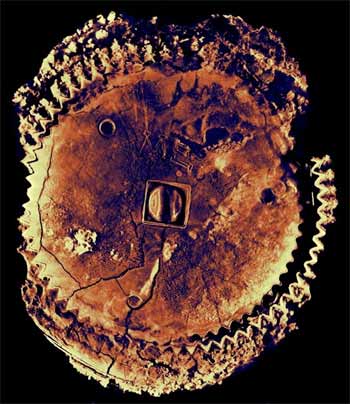Just before Easter 1900, Greek sponge-fishers were on their way to the waters of Tunisia when a violent storm threw their boats to Antikythera, a tiny island located north of Crete in the Aegean.
After the storm, the sponge-fishers explored the waters of Antikythera for sponges. One of the divers, Elias Stadiatis, discovered the remnants of an ancient ship full of statues - horses, men, women, and vases.
Of several treasures, the most precious was a very small piece of metal with gears, which the archaeologists of the National Museum in Athens originally dubbed astrolabe, which in Greek means, “star catcher”. Astrolabes helped figure out the position of the sun and the stars in the sky. Astrolabes were not complicated devices. However, the machine of Antikythera was complex and, eventually, Greek archaeologists renamed it the Antikythera Mechanism dated from 150 to 100 BCE.
Advertisement
The shipwreck probably happened in the middle of the first century BCE. The doomed Roman ship was sailing from Rhodes to Rome. It carried looted Greek treasure: more than 100 bronze and marble statues, amphorae, and coins.
One statue, the Antikythera Youth, is a bronze masterpiece of a naked young man from the fourth century BCE.
Museum officials left the fragments of the Antikythera Mechanism alone until one of them, the archaeologist Spyridon Stais, saw an inscription in ancient Greek on one of the dials. Others noticed perfectly cut triangular gear teeth. It was May 1902.


In 1905, Konstantinos Rados, a naval historian, said the Antikythera device was too complex to be an astrolabe.
Advertisement
In 1907, the German philologist Albert Rehm sided with Rados. Rehm correctly suggested the Antikythera clockwork resembled the Sphere of Archimedes that Cicero saw and described in the first century BCE.
Archimedes, a mathematical genius and engineer of the third century BCE, was the greatest scientist who ever lived. He is the father of mathematical physics and mechanics that made the Antikythera computer possible.
Cicero said the planetarium of Archimedes reproduced the movements of the sun and the moon, including those of the planets one could follow with naked eye: Venus, Mercury, Mars, Saturn and Jupiter. The moon, Cicero said, “was always as many revolutions behind the sun on the bronze contrivance as would agree with the number of days it was behind it in the sky. Thus the same eclipse of the sun happened on the globe as would actually happen [in the sky].”
Discuss in our Forums
See what other readers are saying about this article!
Click here to read & post comments.
7 posts so far.